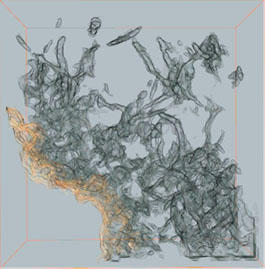Summary
Carbon nanomaterials such as carbon nanotubes (CNTs) and graphene have an extraordinary combination of mechanical, electronic and thermal properties that make them extremely attractive as nanoscale reinforcements in high-performance composites. In principle, the properties of the composite material can be multifunctional and can be precisely tailored by controlling the dispersion of the nanomaterial in the surrounding polymer matrix. In practice, it has proven difficult to realize the expected improvements in material properties for two reasons. First, it is difficult to characterize the distribution of the nanoscale reinforcement and thus develop the necessary process-structure relationships, and second, it is difficult to get a clear picture of the reinforcement/matrix interface and the nature of strain transfer across that interface. The goal of this project is to develop measurement methods that enable a very detailed analysis of the distribution of nanomaterials in polymers, allowing process-structure relationships to be determined in order to permit more rational material design.
Description

Three-dimensional view of carbon nanostructures grown on the surface of a glass fiber (marked in orange). The image was created by taking pictures at multiple angles using energy filtered transmission electron microscopy.
Multi-wall CNTs (MWCNTs) are a common nano-carbon reinforcement material and are frequently dispersed into a polymer matrix to form composites that can be engineered with specific combinations of desirable properties – electrical, thermal, optical and mechanical, etc. However, this multifunctionality is dependent on the detailed arrangement – dispersion, clustering, networking, etc. – of the MWCNTs within these composites. The primary challenge associated with imaging nanoscale carbon reinforcements embedded within an amorphous carbon matrix (i.e. epoxy resin) is achieving sufficient (< 1 nm) imaging resolution to resolve the nanoscale features of interest while also imaging a large enough volume of material to capture the complex, three-dimensional structure of the material. Typically, thin samples are needed for high-resolution imaging, while much thicker samples are necessary to capture the three-dimensional nature of the structures. Satisfying these conflicting requirements simultaneously demands special sample preparation and innovative microscopy techniques.
High-quality, electron-transparent samples are prepared from carbon nanocomposite materials using a dual-beam focused ion beam (DB-FIB). Energy-filtered TEM (EFTEM) is then used to optimize differences in contrast between the two carbon-containing phases, thus enabling high-resolution images to be obtained from thick samples. Tomography is used to analyze the morphology and distribution of MWCNTs in three dimensions with nanometer resolution.

